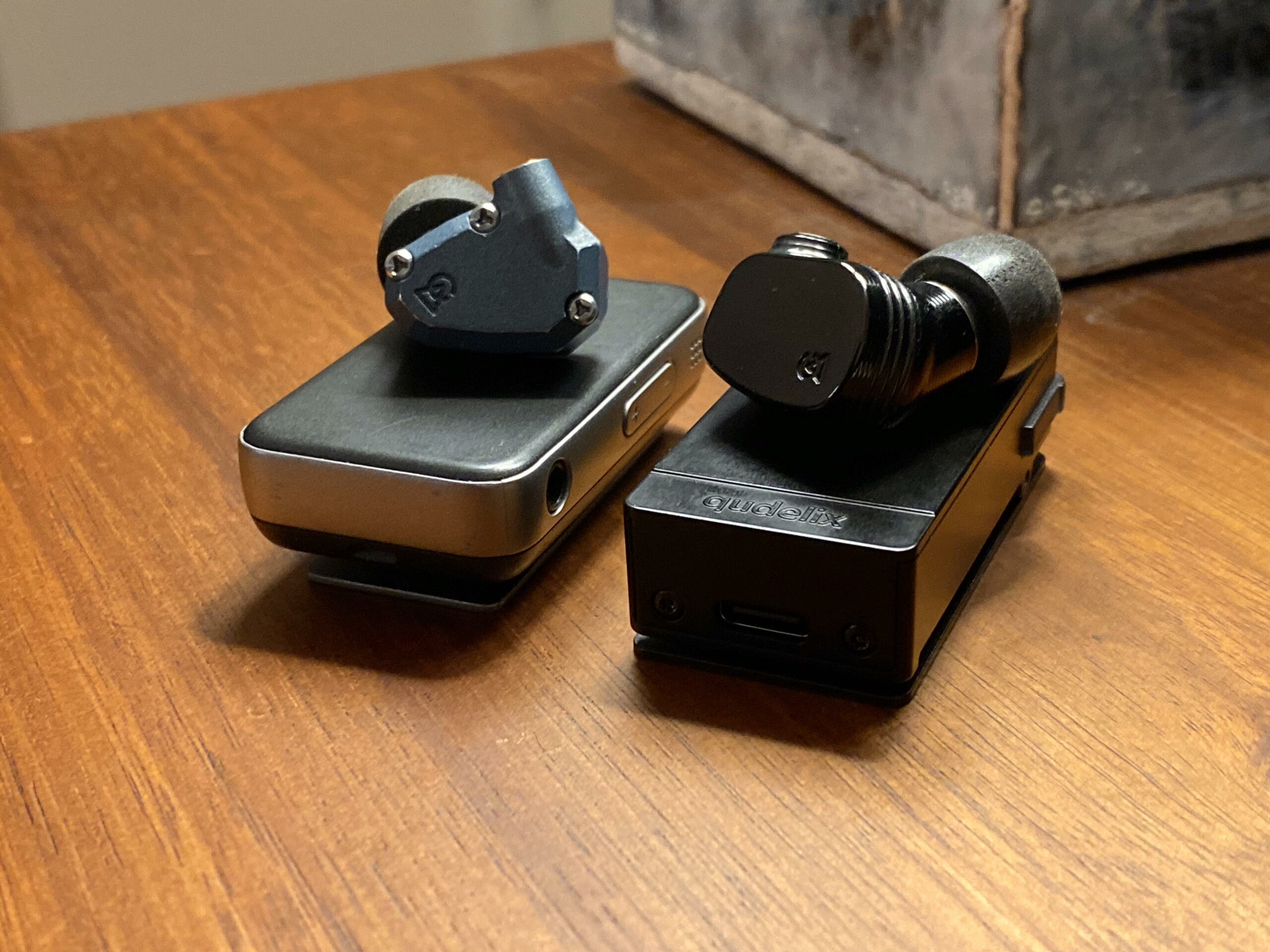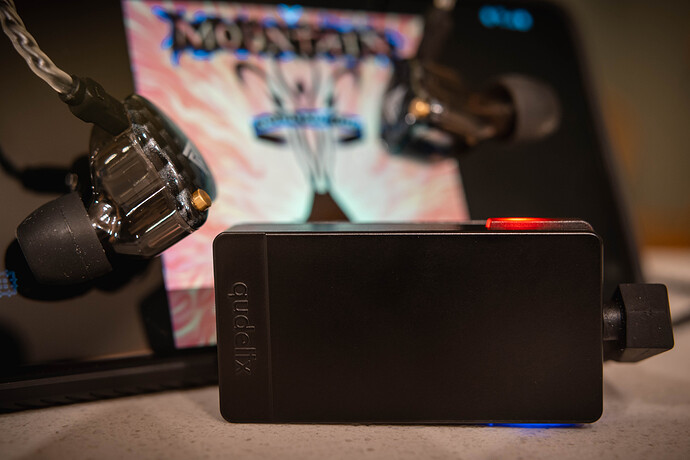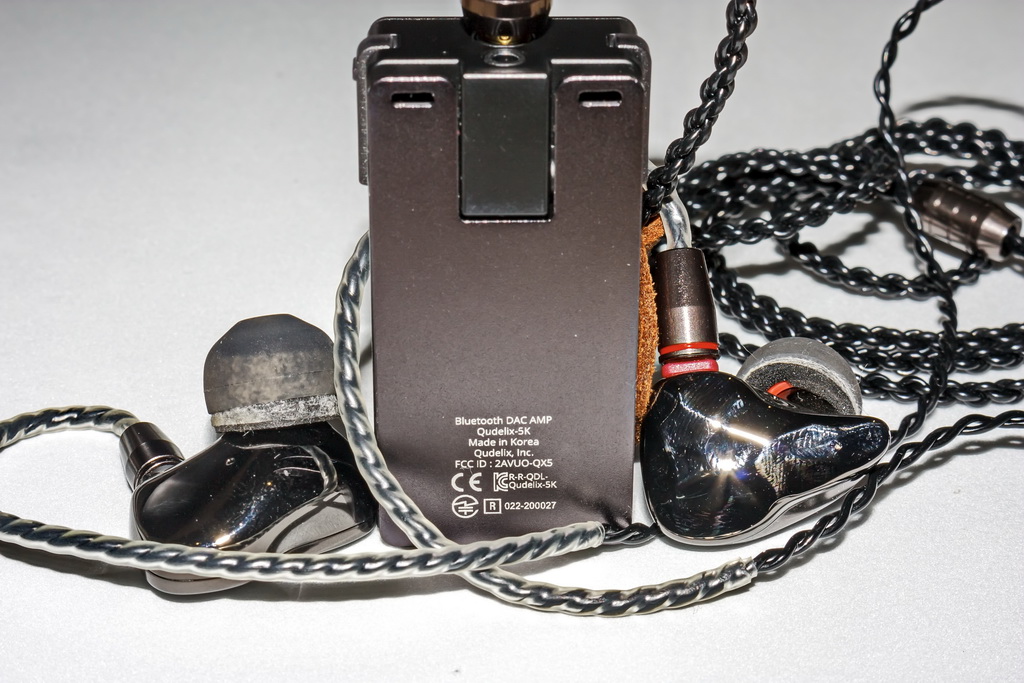Contents
All sorts of DAC/AMP combos exist nowadays but in terms of all-around performance, few reach the level of Qudelix 5K and BTR5. Qudelix 5X features built-in noise cancellation that creates an immersive and distraction-free experience. On the other hand, BTR5 concentrates on delivering exceptional audio quality and connectivity. Below is a more detailed analysis of the products to help you choose the best one
Introduction
| Qudelix 5K | BTR5 | |
| Bluetooth | Qualcomm QCC5124 | Qualcomm CSR8675 |
| DAC | ESS ES9218P | Dual AK4377A |
| Unbalanced Output Power | 47 mW / 32 ohms | 80 mW / 32 ohms |
| Audio Codecs | aptX, aptX HD, aptX LL, LDAC, AAC, SBC | aptX, aptX HD, aptX LL, LDAC, AAC, SBC |
| Battery Life | 10-12 hours | 9 hours |
| Balanced output power | 157 mW / 32 ohms | 240 mW / 32 ohms |
Qudelix 5K Vs. BTR5: Summary
Chip
In case you don’t know, Qudelix 5 includes a Qualcomm QCC5124 Bluetooth chip that is the base of its impressive connectivity. The chip grants Qudelix 5K multipoint Bluetooth support which allows users to connect two devices to it simultaneously in times of need. Meanwhile, FiiO BTR5 uses the Qualcomm CSR8675 Bluetooth chip that guarantees consistent wireless connectivity in most of the cases. The chip features low-latency audio transmission and supports various Bluetooth standards so it facilitates pairing and keeps signal loss to the minimum.
DAC Capabilities
For your information, Qudelix 5K relies on ESS ES9218P Digital-to-Analog Converter to change the audio format of incoming signals. The DAC is famous for its high performance as well as its ability to generate high-quality audio. Noteworthily, it’s capable of enhancing computer-based audio when used as a USB DAC. Unsurprisingly, Qudelix 5K is held in high esteem by audiophiles around the globe.
About BTR5, it comes alongside dual AK4377A DAC chips which make it a powerful conversion platform. Since the dual setup improves dynamic range as well as separation of audio elements, all elements will come out more clearly.
Output Power
Qudelix 5K offers 47mW at 30 ohms for unbalanced power and 157 mW at 32 ohms for balanced output. The amount of power means there is excellent control over the sound which results in optimal audio and volume. BTR5 is superior to Qublix 5K in terms of power though as it can deliver 80 mW for unbalanced output and 240 mW for balanced output at 32 ohms. The gap in power permits BTR5 to support more devices and produce clearer dynamic sounds than Qudelix 5K.
Battery Life
The battery life of Qudelix 5K lasts between 10 and 12 hours so it’s convenient to use. If you go on long trips every now and then, you won’t regret investing in Qudelix 5K. About BTR5, it falls behind Qudelix 5K regarding battery life as it’s only able to work for 9 hours per charge. That being said, the battery life of BTR5 is not half-bad and proves more than sufficient for casual use.
Miscellaneous
Qudelix 5K
Extensions
For the sake of convenience, Qudelix 5k sports extensions for Windows, Linux, and macOS. The extensions let people tweak the settings of Qudelix 5K when they connect it to their computer via USB/Bluetooth. Needless to say, the extensions ease streaming and since they work in all modes, there is no need to switch between Bluetooth and USB to apply changes to settings.
Internal Professional Grade Equalizer
Qudelix 5K is accompanied by a professional grade 64-bit double-precision parametric equalizer that supports all audio inputs. That means you have the option of processing incoming signals regardless of the source: YouTube, Spotify, USB, Android, PC, … Furthermore, the equalizer allows customization so it’s a breeze to secure accurate filtering performance that sustains the original sound quality and resolution.
Automated Battery Care
Qudelix 5K contains programs that manage its battery in use and outside of use for the best longevity. It’s going to draw power directly from USB when in USB DAC mode so it won’t draw power from the battery when charging. That leads to long battery life as well as a high level of flexibility.
FiiO BTR5
Controls
The user interface of BTR5 is easy to use and simple to manipulate: it consists of 3 buttons and a mic for hands-free calls. Aside from that, the small button that lies between the volume and power buttons is multifunctional. By taking advantage of that button, you can change playback functions, toggle voice assistant and so on at your leisure. Finally, BTR5 features memorized volumes with 60 options and 32 options for USB and Bluetooth respectively so nailing the volume is a walk in the park.
FiiO Music App
Noteworthily, if you opt for BTR5, you may use the FiiO music app to access more options such as filters, channel balance and a 10-band equalizer. While the MQA decoding feature reduces the filters from 6 to 2, it doesn’t significantly affect the experience as a whole. The app comes in handy when you want to use BTR5 while doing something else, especially if you are driving.
Screen Display
BTR5 incorporates a 0.49-inch OLED screen that shows you all the key information: battery life, pairing status, call status, volume, and Bluetooth codecs. In use, the screen of BTR5 will help you change between modes like car and charging at a moment’s notice.
Conclusion
All in all, Qudelix 5K and BTR5 have unique characteristics that permit them to excel in distinct situations. If you desire a DAC/AMP combo that sounds good and won’t require frequent recharge, you should find Qudelix 5K to be a solid model. In the case that all you seek is an adaptable DAC/AMP combo for on-the-move applications, BTR5 is going to be your best bet.

Hi music fan! I am Jeff. Hope that you enjoy some stuff I shared here in my personal blog.
About myself, Currently I am in charging as Artist Manager/Music Supervisor at 72 Music Management. I did managed album to Grammy Award in 2017 with 7 Nominations from 2014-2020 and had the opportunities to work with : A.J. Croce, Blind Boys of Alabama, Bobby Rush, Dom Flemons, Dustbowl Revival, Sarah Grace
Governor of the Memphis Chapter of The Recording Academy is one of a award that I am lucky to achieved.



